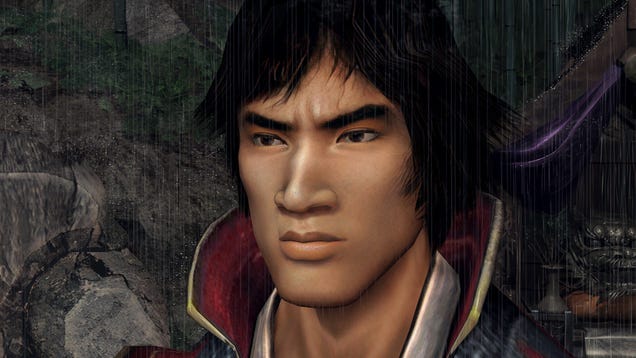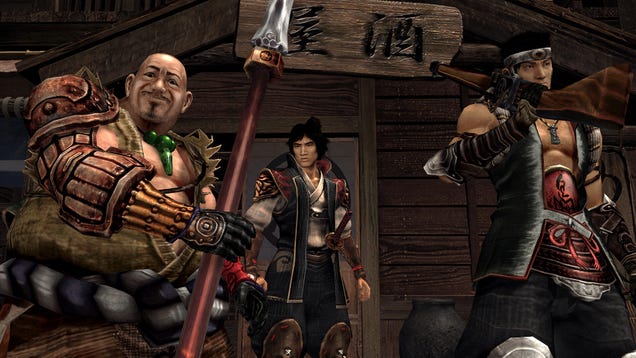






 Posted by msmash from Slashdot
Posted by msmash from Slashdot
From the challenging-norms department: Rice plants can inherit tolerance to cold without changes to their genomes, according to a decade-long study carried out by researchers in China. From a report: The work, published in Cell this week, strengthens the evidence for a form of evolution in which environmental pressures induce heritable changes that do not alter an organism's DNA. The study conducted experiments that demonstrate, for the first time, the mechanism for these changes -- 'epigenetic' tweaks to chemical markers on the plant's DNA that don't actually tinker with the sequences themselves.
"What they're showing is extremely convincing; I would say that it's a landmark in the field," says Leandro Quadrana, a plant geneticist at the French National Centre for Scientific Research in Paris-Saclay. Michael Skinner, who studies epigenetic inheritance at Washington State University in Pullman, says the study adds to the growing body of evidence challenging the prevailing view of evolution that the only way that adaptations emerge is through gradual natural selection of randomly arising DNA mutations. This study shows that the environment isn't just a passive actor in evolution, but a selective force inducing a targeted change.







 Posted by from MMO Champion
Posted by from MMO Champion
WoW Weekly: Horrific Visions Revisited, Season 2 Global Finals, and More!
Originally Posted by Blizzard
(
Blue Tracker /
Official Forums)
Revisit Horrific Visions for New Challenges and Rewards

Madness stirs once more! Return to N'Zoth's twisted versions of Stormwind and Orgrimmar in Horrific Visions Revisted and take on the new challenges within—complete objectives, collect Displaced Corrupted Mementos, and claim a dark trove of mounts, toys, transmogs, weapon enchantments, and more!
Whether powering up your Warband or venturing into the nightmare for the first time, now is the moment to walk willingly into the void and seize what lies beyond—maintain your Sanity or ultimately fail.
Speak with Soridormi, who has set up camp on the Coreway overlook in Dornogal to deliver you to the Tenebrous Gateway, where the Image of Wrathion will help you enter the void-corrupted visions of Orgrimmar or Stormwind.
Do you think you can stand the horrors? Everything you need to know about Horrific Visions can be found in our
article. Gather your allies to stand steadfast against the ancient corruption spreading across Azeroth.
The AWC & MDI Season 2 Global Finals Start May 23!

< This article continues on their website >







 Posted by msmash from Slashdot
Posted by msmash from Slashdot
From the X-Files-I-want-to-believe department: Harvard University's Galileo Project is using AI to automate the search for unidentified anomalous phenomena, marking a significant shift in how academics approach what was once considered fringe research. The project operates a Massachusetts observatory equipped with infrared cameras, acoustic sensors, and radio-frequency analyzers that continuously scan the sky for unusual objects.
Researchers Laura Domine and Richard Cloete are training machine learning algorithms to recognize all normal aerial phenomena -- planes, birds, drones, weather balloons -- so the system can flag genuine anomalies for human analysis. The team uses computer vision software called YOLO (You Only Look Once) and has generated hundreds of thousands of synthetic images to train their models, though the software currently identifies only 36% of aircraft captured by infrared cameras.
The Pentagon is pursuing parallel efforts through its All-domain Anomaly Resolution Office, which has examined over 1,800 UAP reports and identified 50 to 60 cases as "true anomalies" that government scientists cannot explain. AARO has developed its own sensor suite called Gremlin, using similar technology to Harvard's observatory. Both programs represent the growing legitimization of UAP research following 2017 Defense Department disclosures about military encounters with unexplained aerial phenomena.







 Posted by msmash from Slashdot
Posted by msmash from Slashdot
From the closer-look department: An interesting piece on Construction Physics that examines how Japan transformed discarded American wartime shipbuilding techniques into a revolutionary manufacturing system that captured nearly half the global market by 1970. The story reveals the essential ingredients for industrial dominance: government backing, organizational alignment, relentless will to improve, and the systematic coordination needed to turn existing technologies into something entirely new. A few excerpts: During WWII, the US constructed an unprecedented shipbuilding machine. By assembling ships from welded, prefabricated blocks, the US built a huge number of cargo ships incredibly quickly, overwhelming Germany's u-boats and helping to win the war. But when the war was over, this shipbuilding machine was dismantled. Industrialists like Henry Kaiser and Stephen Bechtel, who operated some of the US's most efficient wartime shipyards, left the shipbuilding business. Prior to the war, the US had been an uncompetitive commercial shipbuilder producing a small fraction of commercial oceangoing ships, and that's what it became again. At the height of the war the US was producing nearly 90% of the world's ships. By the 1950s, it produced just over 2%.
But the lessons from the US's shipbuilding machine weren't forgotten. After the war, practitioners brought them to Japan, where they would continue to evolve, eventually allowing Japan to build ships faster and cheaper than almost anyone else in the world.
< This article continues on their website >




 Disney has enchanted us for decades with its resplendent animation and fantastical stories of princesses, wicked witches, and fire-breathing dragons, but music has always been its most indelible sprinkle of pixie dust. There are songs that move us, make us dance, and help us understand the characters that have already…
Disney has enchanted us for decades with its resplendent animation and fantastical stories of princesses, wicked witches, and fire-breathing dragons, but music has always been its most indelible sprinkle of pixie dust. There are songs that move us, make us dance, and help us understand the characters that have already…
 Capcom’s remaster of 2002 PS2 hack and slash adventure Onimusha 2: Samurai’s Destiny is a classic, though it does show its age at some points—particularly with its fixed camera angles and gameplay that certainly feels more than 20 years old. But it still has plenty of charming characters and replayability.
Capcom’s remaster of 2002 PS2 hack and slash adventure Onimusha 2: Samurai’s Destiny is a classic, though it does show its age at some points—particularly with its fixed camera angles and gameplay that certainly feels more than 20 years old. But it still has plenty of charming characters and replayability.
 Well, this is neat. Apparently, some Switch 2 games will support you just plugging in a USB mouse and playing that way instead of using a controller or the Joy-Con’s mouse-like features. I’ll be curious to test this out when the console arrives next month.
Well, this is neat. Apparently, some Switch 2 games will support you just plugging in a USB mouse and playing that way instead of using a controller or the Joy-Con’s mouse-like features. I’ll be curious to test this out when the console arrives next month.
 The first Onimusha game was remastered for modern consoles back in 2019, and it was only a matter of time before the second one was too. Onimusha 2: Samurai’s Destiny is a nostalgic trip back to the classic Capcom PS2 era with fixed camera angles and linear gameplay. Don’t expect any complicated mechanics like ones…
The first Onimusha game was remastered for modern consoles back in 2019, and it was only a matter of time before the second one was too. Onimusha 2: Samurai’s Destiny is a nostalgic trip back to the classic Capcom PS2 era with fixed camera angles and linear gameplay. Don’t expect any complicated mechanics like ones…
 Teenage Mutant Ninja Turtles: Tactical Takedown isn’t like most other TMNT games. Usually, in games featuring the famous turtle crimefighters, you punch and kick a ton of goons in real-time, either alone or with some buddies. That’s not the case in TMNT: Tactical Takedown, which is instead a turn-based tactics game.…
Teenage Mutant Ninja Turtles: Tactical Takedown isn’t like most other TMNT games. Usually, in games featuring the famous turtle crimefighters, you punch and kick a ton of goons in real-time, either alone or with some buddies. That’s not the case in TMNT: Tactical Takedown, which is instead a turn-based tactics game.…
 This comic contains the magic secret of how I get ideas for comics
This comic contains the magic secret of how I get ideas for comics


 While the base game of Monster Hunter Wilds allows you to customize your hunter, Palico, and Seikret, the game’s first Title Update also added customization for Alma. Your handler can now try on some new outfits and even swap between pairs of glasses. Unfortunately, there isn’t much explanation about how to attain…
While the base game of Monster Hunter Wilds allows you to customize your hunter, Palico, and Seikret, the game’s first Title Update also added customization for Alma. Your handler can now try on some new outfits and even swap between pairs of glasses. Unfortunately, there isn’t much explanation about how to attain…

 The video game-to-Hollywood pipeline is prepping for a doozy. A24 announced Elden Ring is the latest hit game slated to get a live-action adaptation, with Ex Machina and Civil War’s Alex Garland signed on to direct. What exactly the result will be is anyone’s guess, and fans aren’t quite sure whether to praise the sun…
The video game-to-Hollywood pipeline is prepping for a doozy. A24 announced Elden Ring is the latest hit game slated to get a live-action adaptation, with Ex Machina and Civil War’s Alex Garland signed on to direct. What exactly the result will be is anyone’s guess, and fans aren’t quite sure whether to praise the sun…
 May 2026 was going to kick-off the next phase of the Marvel cinematic universe with the return of Robert Downey Jr. as Doctor Doom. Not anymore. Avengers: Doomsday has been delayed along with Secret Wars. Grand Theft Auto 6 will now have the month (mostly) to itself, assuming it doesn’t get delayed again as well.
May 2026 was going to kick-off the next phase of the Marvel cinematic universe with the return of Robert Downey Jr. as Doctor Doom. Not anymore. Avengers: Doomsday has been delayed along with Secret Wars. Grand Theft Auto 6 will now have the month (mostly) to itself, assuming it doesn’t get delayed again as well.